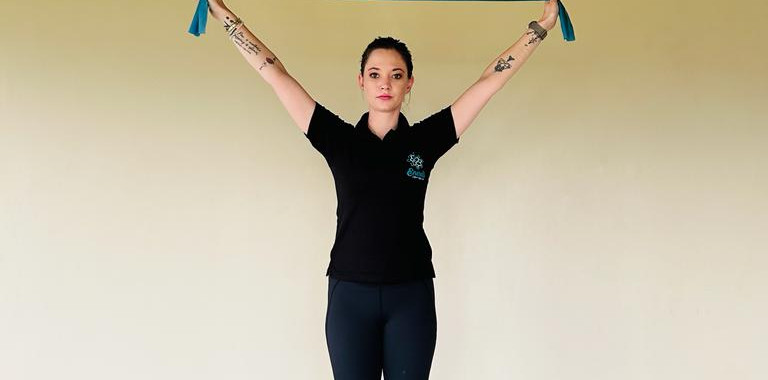Golf and Biased-Body Sports: The Crucial Role of Pilates in Maintaining Optimal Body Balance
- Chi Ingledew
- Nov 27, 2023
- 3 min read
Rebecca writes, as a Pilates instructor, I have witnessed firsthand the significant impact biased-body sports like golf can have on an individual's physical well-being. Golf, a beloved pastime for many, requires intricate movements that often place strain on specific areas of the body. However, through the practice of Pilates, golfers can achieve a harmonious balance in their bodies, mitigating the negative effects and enhancing their overall performance.
Rotation of the Body and Its Uses:
Golf is a sport heavily reliant on rotational movements, demanding exceptional flexibility and strength in the core and spine. The rotation of the body is crucial for executing powerful swings. However, improper rotation can lead to overuse injuries, particularly in the lumbar spine and shoulders.
Through Pilates, golfers can develop a stronger and more stable core, facilitating proper rotational mechanics. Pilates exercises like "The Hundred" engage deep abdominal muscles and obliques, promoting the controlled rotation necessary for a fluid golf swing. By incorporating Pilates into their routine, golfers can reduce the risk of injuries while enhancing their performance on the green.
Flexion of the Body and Its Uses:
In golf, flexion plays a vital role during the setup and execution of shots. The constant bending and twisting can lead to strain on the lower back, hamstrings, and hips, leading to discomfort and potential injuries.
Pilates focuses on strengthening the entire posterior chain, which includes the lower back, glutes, and hamstrings. Exercises like "Swan Dive" and "Leg Circles" help improve flexibility and strength, reducing the strain on the body during golf swings. By embracing Pilates, golfers can enhance their ability to maintain proper posture throughout their game, preventing unnecessary stress on the spine and lower extremities.
Lateral Flexion and Extension of the Body and Its Uses:
Lateral flexion and extension are often overlooked aspects of golf, yet they play a critical role in achieving proper alignment during various shots. Repetitive movements without proper lateral control can lead to muscle imbalances and potential joint issues.
Pilates emphasizes lateral movement patterns, which can help golfers improve their balance and coordination. Exercises like "Side Bend" and "Mermaid" target lateral muscle groups, encouraging stability and proper alignment. Incorporating these movements into a golfer's training regime will result in enhanced body awareness and better control over their swings, minimizing the risk of injury and optimizing performance.
Negative Effects of Biased-Body Sports on the Body:
Golf and other biased-body sports can exert undue stress on specific muscle groups and joints, leading to various negative effects such as:
1. Overuse injuries: Repetitive movements can strain certain body parts, leading to tendonitis, golfer's elbow, and other chronic issues.
2. Muscle imbalances: Focusing on specific muscle groups while neglecting others can create imbalances, affecting posture and performance.
Joint pain: Constant pressure on joints, particularly the knees, hips, and spine, can result in discomfort and reduced mobility.
3. Reduced flexibility: Biased-body sports can hinder overall flexibility, limiting the range of motion and affecting overall athletic performance.
The inclusion of Pilates in a golfer's fitness routine can provide numerous benefits, including:
1. Enhanced body awareness: Pilates promotes mindful movement, allowing golfers to develop a deeper understanding of their bodies and movements during the game.
2. Improved flexibility: Pilates exercises increase overall flexibility, helping golfers achieve a more fluid and controlled swing.
3. Strengthened core: A strong core is essential for stability and power in golf; Pilates targets core muscles effectively.
4. Balanced muscle development: Pilates addresses muscle imbalances, reducing the risk of overuse injuries and enhancing overall performance.
5. Better posture and alignment: Pilates emphasizes proper alignment, leading to improved posture on and off the golf course.
6. Injury prevention: By strengthening and stabilizing the body, Pilates can significantly reduce the risk of golf-related injuries.
7. Mind-body connection: The focus on breath and concentration in Pilates complements the mental aspects of golf, leading to improved focus and concentration.
Golf and biased-body sports can take a toll on the body, leading to various negative effects and potential injuries. However, through the incorporation of Pilates into a golfer's physical regime, these risks can be mitigated. By focusing on rotational, flexion, and lateral movement patterns, Pilates enhances body awareness, improves flexibility, and promotes a balanced and injury-resistant physique. For golfers, embracing Pilates is not just an exercise routine; it is a powerful tool to optimize performance and ensure a long and fulfilling journey on the green.






































Comments